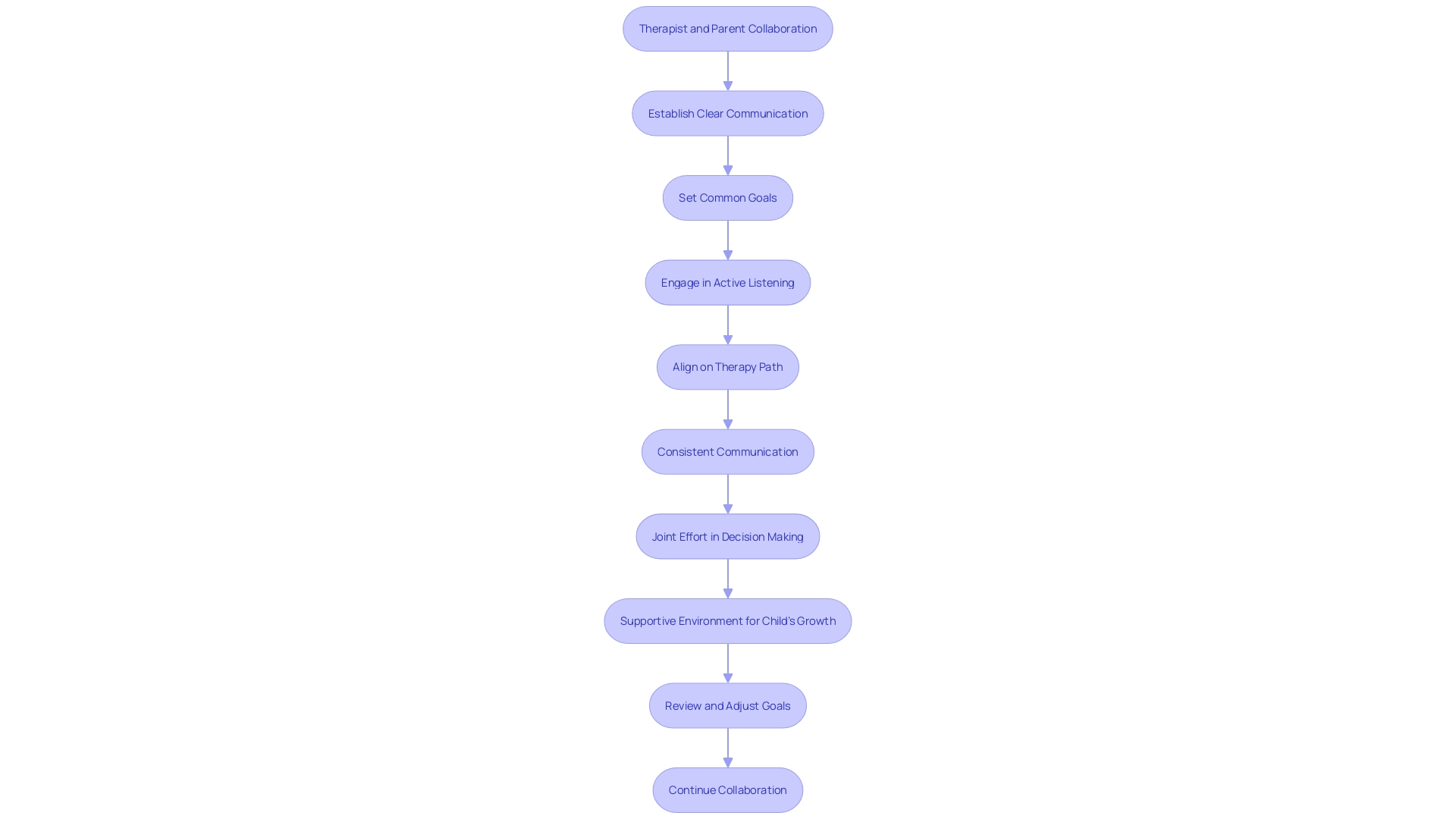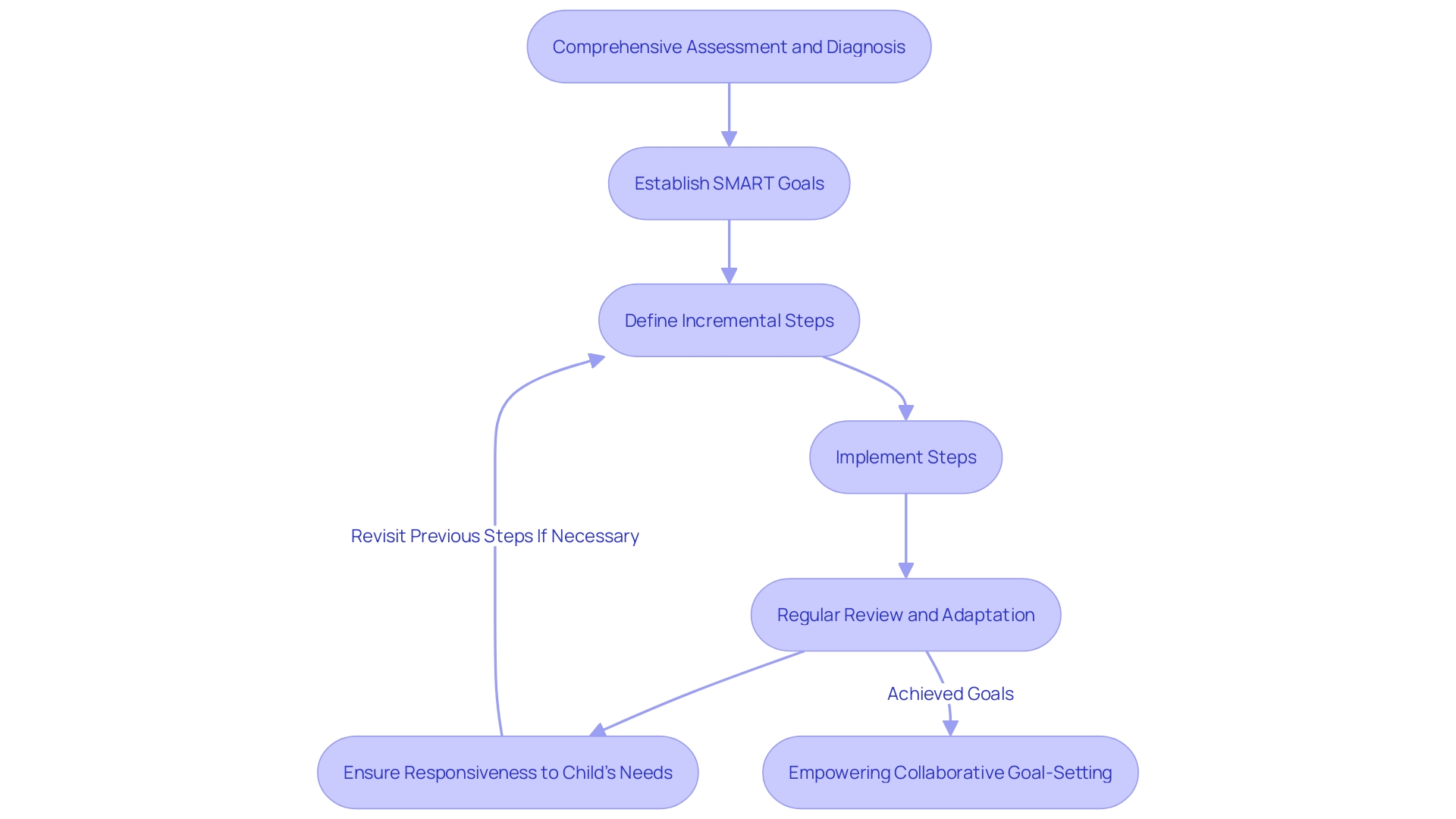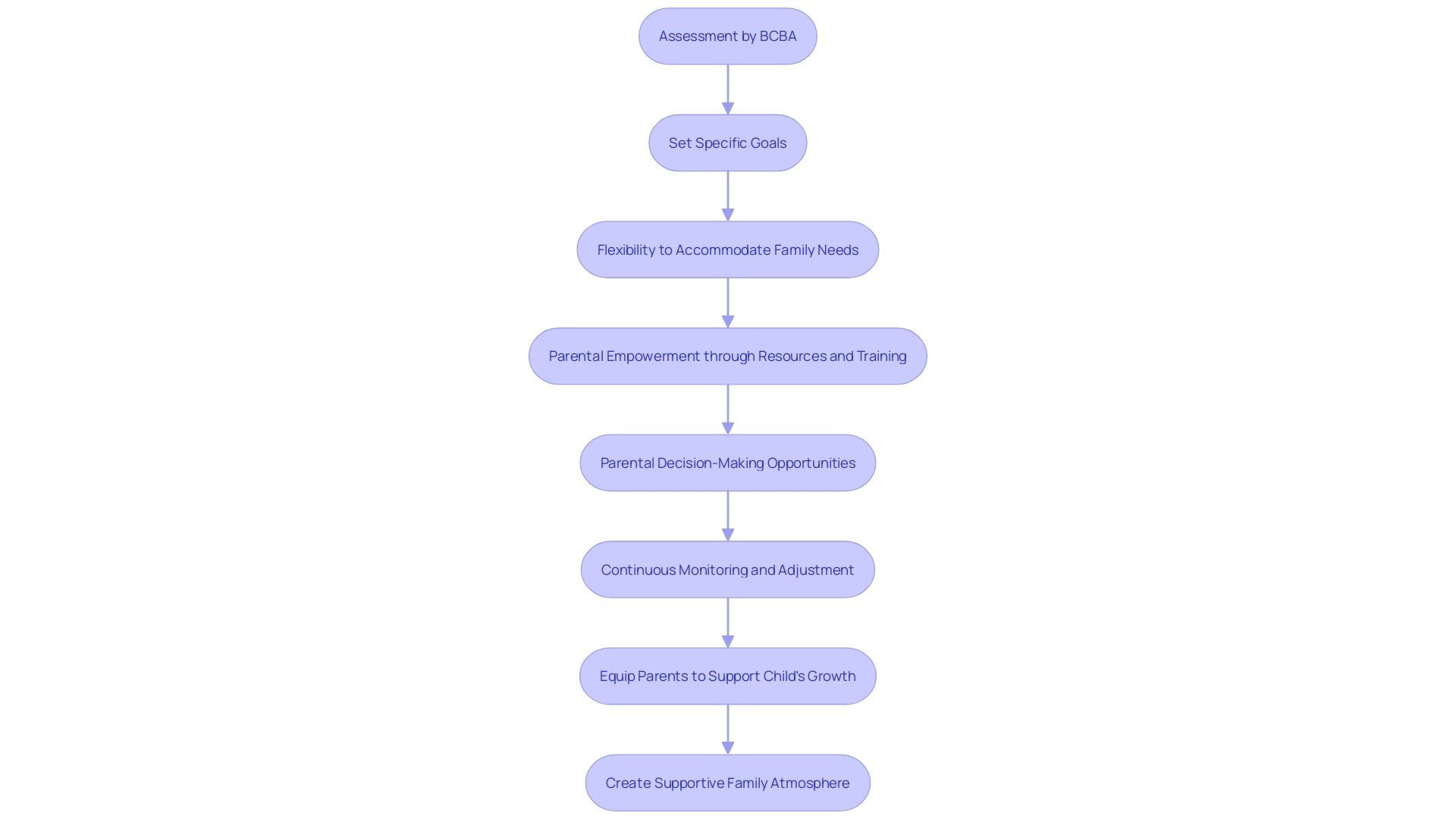Introduction
In the realm of ABA Behavioral Therapy, the collaboration between therapists and parents is paramount for the developmental progress of children. Crafted by Board-Certified Behavior Analysts, technology solutions streamline the review processes for healthcare providers, enhancing the quality of care received by children with disabilities. This article explores the importance of collaboration, open communication, sharing information and insights, collaborative goal-setting, strategies for consistency across settings, supporting parents as active participants, and addressing challenges together.
By empowering parents and providing guidance, therapists and parents form a unified front that champions the child's journey towards growth and independence.
Understanding the Importance of Collaboration
In the realm of ABA Behavioral Therapy, the synergy between therapists and parents is paramount, forming a bedrock for the child's developmental progress. Board-Certified Behavior Analysts, with extensive clinical expertise, underscore the necessity of crafting and refining technology solutions that bolster coordinated care. Such advancements in treatment protocols not only streamline the review processes for healthcare providers but also enhance the quality of care received by children with disabilities.
Dr. David (Dan) R. Offord, a renowned child psychiatrist, once likened growing up in Canada to a race, expressing the sentiment that fairness is key. This philosophy extends to the domain of therapy, where a fair 'race' is embodied by equitable and active participation of children in various life aspects—school, home, and leisure. Acknowledging the unique needs and contributions of children with disabilities, while addressing their stressors and empowering parents with the necessary resources, is instrumental in fostering their mental health and overall well-being.
The collaboration between parents and therapists, hence, is not just a matter of protocol but a holistic approach to ensuring that therapy resonates with the child's needs and family dynamics. By integrating technology that supports high-quality care, therapists are better equipped to work closely with parents, forming a unified front that champions the child's journey towards growth and independence.
Establishing Open Lines of Communication
Cultivating a collaborative environment between therapists and parents is pivotal for the child's therapy to be truly effective. It is essential for therapists and parents to engage in consistent and open communication, setting mutual goals, and practicing active listening. Collaborative efforts not only help address any concerns but also ensure a unified approach in applying therapeutic techniques.
One approach to enhance this partnership is by recognizing the 'Parallel Lane Dilemma' where parents and therapists might have the same destination in mind but take different routes—either the express lane or the scenic route. It's crucial to align these paths by setting shared objectives and discussing the facts surrounding the child's progress, without getting stuck in a conversation traffic jam'.
According to recent findings, acknowledging the importance of therapy for children and adolescents has become more prevalent. As the stigma around seeking therapeutic help diminishes, it is now seen as a proactive and positive step.
In this respect, the immediate impact of psychotherapy on depression post-treatment has been quantified, shedding light on the efficacy of mental health interventions. This not only underscores the value of therapy but also emphasizes the necessity for parents to be actively involved to maximize the benefits for their child.
By addressing the need for clear communication and joint efforts, therapists and parents can effectively navigate the complexities of therapy, ensuring the child's well-being and fostering a supportive environment for their growth.

Sharing Information and Insights
In the collaborative journey of ABA therapy, therapists and parents play pivotal roles, each contributing unique perspectives and expertise. Therapists, armed with a wealth of clinical knowledge and experience, often strive to craft and implement effective therapy techniques tailored to the individual needs of children. Meanwhile, parents, who observe and interact with their children daily, offer invaluable insights into their child's responses to various situations and progress over time.
For instance, consider a behavior analyst with over a decade of experience across various treatment settings, who emphasizes the importance of coordinated care and best practices. This professional insight is instrumental in ensuring that therapy aligns with the child's lived experiences and the family's goals. Moreover, the wisdom of Dr. David (Dan) R. Offord, a renowned child psychiatrist, resonates deeply with the philosophy of equitable care.
He advocated for a fair 'race' for all children, including those with disabilities, stressing the critical role of engaged and well-supported participation in their communities for mental health and well-being.
Reflecting on these expert views, we understand that when therapists provide parents with a comprehensive understanding of the therapeutic strategies in play, and parents reciprocate with detailed observations and feedback, a synergistic effect emerges. This two-way exchange fosters a well-rounded approach, ensuring therapy is not only effective but also equitable and respectful of the child's unique journey. It's a partnership where each party's knowledge intersects to elevate the therapeutic experience, ultimately enhancing the child's development and participation in all life's domains.
Collaborative Goal-Setting
Collaborative goal-setting bridges the gap between therapists' expertise and parents' intimate knowledge of their child's needs, creating a powerful alliance aimed at enhancing therapeutic outcomes. A treatment plan is not just a formality; it's a strategic map that directs the journey toward healing and growth, tailored to the unique landscape of the child's mental and emotional world. It starts with a comprehensive assessment, leading to a diagnosis that sheds light on the challenges at hand.
From here, specific, measurable, achievable, relevant, and time-bound (SMART) goals are established, reflecting a shared vision for the child's progress.
To bring these goals to life, incremental steps are outlined, providing clear milestones along the therapeutic path. Parents and therapists regularly revisit these objectives, ensuring they remain responsive to the child's evolving needs. This dynamic process not only keeps therapy on track but also empowers parents, as evidenced by a survey where 74% of goal-setting parents reported feeling like better caregivers, while 85% observed their children learning to strive towards goals.
The synergy of collaborative goal-setting is evident in case studies like Harald's, where the integration of personal history and external support fostered a therapeutic environment conducive to change. Moreover, this approach echoes the findings of Dr. Heather Lench's research on emotions, which underscores the importance of channeling emotional responses into constructive actions towards goal achievement.
In embracing a collaborative approach, therapists and parents alike tap into the reservoir of hope and resilience that supports not just the child, but the family and community as a whole. By uniting their efforts, they craft a treatment plan that's a living document, adapting and evolving just as the child does, steering towards a future of well-being and fulfillment.

Strategies for Consistency Across Settings
For ABA therapy to truly be effective, it's essential to maintain a consistent approach across different environments, such as the child's home, school, and during therapy sessions. Establishing consistent routines can be immensely beneficial, as they provide a structured framework that can reduce anxiety and uncertainty for the child. Additionally, the use of visual supports can be a powerful tool in reinforcing these routines, helping the child to understand and anticipate what comes next in their day.
To further support a child's development, clear guidelines for behavior management are paramount. These guidelines not only assist in managing expectations but also help in creating a cohesive strategy between therapists and parents. Such an approach ensures that the child receives a unified message, which is critical for their progress.
A Board-Certified Behavior Analyst with extensive experience has emphasized the importance of high-quality, coordinated care. This professional has been at the forefront of advancing technology solutions that aid providers and health plans in delivering streamlined and effective care. Their insights shed light on the necessity of integrating best practices into therapy to optimize outcomes.
Research analyses have highlighted the challenges in interpreting the effectiveness of non pharmacological interventions, due to flaws in study designs. This underscores the importance of well-conducted research to guide best practices in ABA therapy and other interventions for autism. By drawing from the experiences of the autism community, which has been pivotal in advocating for higher research standards, we can strive to provide respectful and effective support for those on the autism spectrum.
In bridging the gap between various settings, it's integral for therapists and parents to work collaboratively, utilizing these strategies to nurture a supportive environment that caters to the child's unique needs. This coordinated effort is the cornerstone of successful ABA therapy, leading to more impactful and lasting changes in the child's behavior and overall wellbeing.
Supporting Parents as Active Participants
For children with autism, including those with co-occurring emotional and behavior problems, a fair chance at engagement in daily life is crucial for their mental health and equity in society. This emphasizes the importance of a collaborative approach in ABA therapy, where parents are essential allies in their child's development. A Board Certified Behavior Analyst (BCBA) begins with a thorough assessment to set specific, measurable goals for the child.
As Dr. Offord's analogy of life being a race implies, the goal is to ensure a fair start for every child.
Recognizing the diverse needs and schedules of families, therapy must be flexible. This flexibility extends to involving parents in the therapy by empowering them with the right resources, training, and decision-making opportunities. Parents' involvement is not only encouraged but seen as a fundamental component of the therapeutic process.
Kelley Coleman, author and parent to a disabled son, understands the importance of navigating the intricate systems involved in caring for a disabled child. Her insights resonate with the need for parents to be well-supported and informed.
The landscape of autism diagnosis and treatment is ever-changing, as noted by Dr. Jan Blacher, highlighting the increasing prevalence and evolving understanding of autism. This underscores the necessity for tailored interventions that consider the unique needs of each child. Dr. Doreen Granpeesheh echoes this sentiment, advocating for adaptive work models that cater to the individual needs of therapists, allowing them to provide the best care possible.
In summary, a successful ABA therapy journey involves a partnership between therapists and parents, where each child's program is regularly monitored and adjusted. The ultimate aim is to equip parents to support their child's growth, reducing stress, and fostering a supportive atmosphere for the entire family.

Addressing Challenges Together
Navigating the complexities of ABA therapy requires a synergy between the therapist's expertise and a parent's intimate knowledge of their child. A New York state-licensed and Board-Certified Behavior Analyst emphasizes the importance of this collaborative approach by leveraging over a decade of clinical experience. This collaboration is not just about sharing updates on progress, but also about working together to address challenges as they arise.
It's about creating and enhancing technology solutions that enable providers and health plans to deliver coordinated, high-quality care.
One of the most effective strategies in this collaborative process is structured communication. This approach fosters a platform where therapists and parents can exchange ideas, voice concerns, and brainstorm solutions in a focused manner. Whether it's addressing instructional challenges such as curriculum enhancements and behavior management or logistical issues like resource allocation and scheduling, structured communication ensures that all parties are aligned and working toward the same goals.
Incorporating technology solutions that streamline review processes can significantly enhance this communication, ensuring that therapy is both effective and tailored to the unique needs of each child. By maintaining this level of open and structured dialogue, therapists and parents can more effectively navigate the journey of ABA therapy, overcoming obstacles and continually fostering progress.

Conclusion
Collaboration between therapists and parents is paramount in ABA Behavioral Therapy, enhancing the quality of care for children with disabilities. Open communication and technology solutions create a unified front that champions the child's growth and independence.
Sharing information and insights between therapists and parents ensures a well-rounded approach tailored to the child's unique journey. Collaborative goal-setting empowers both parties, leading to better caregiving and children striving towards their goals.
Consistency across settings and clear behavior management guidelines create a cohesive strategy for the child's progress. Supporting parents as active participants and providing resources fosters a supportive atmosphere for the entire family.
Addressing challenges together and leveraging technology solutions are key in navigating the complexities of therapy. By maintaining open communication, therapists and parents can overcome obstacles and foster continuous progress.
In conclusion, collaboration, open communication, sharing information and insights, collaborative goal-setting, consistency across settings, and supporting parents as active participants are vital in ABA therapy. By following these principles, therapists and parents empower each other, ensuring the well-being and developmental progress of children with disabilities.




